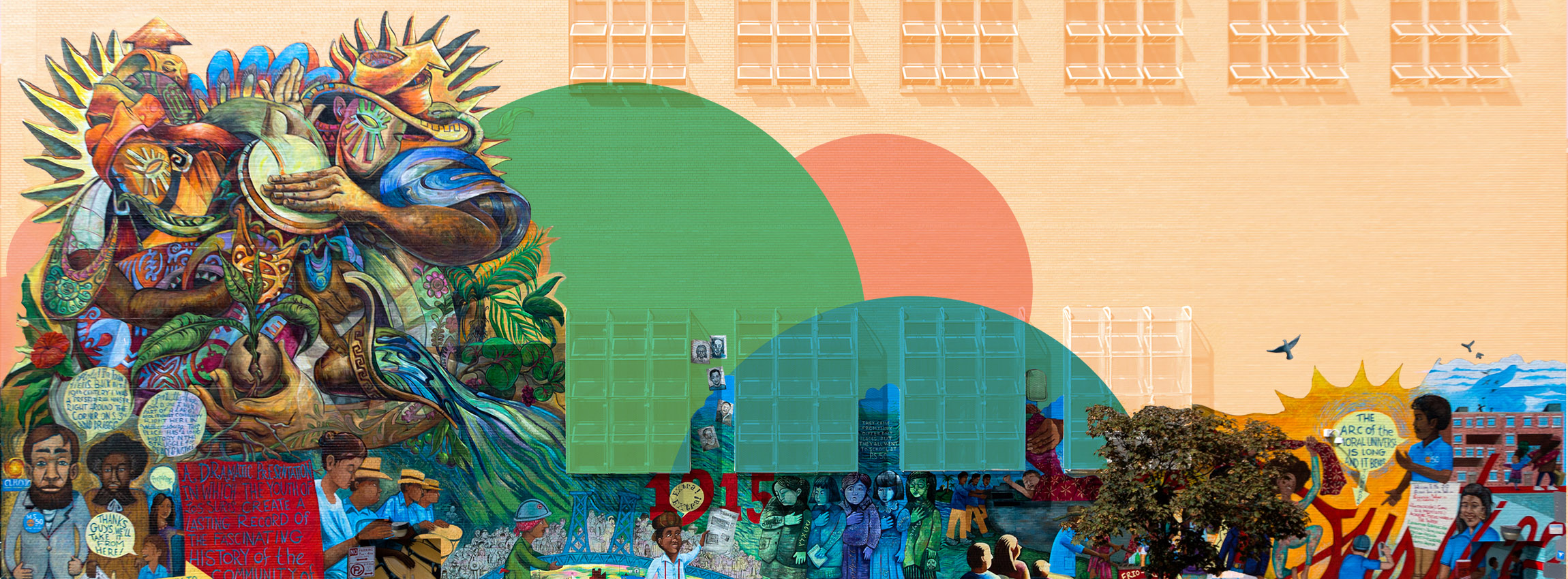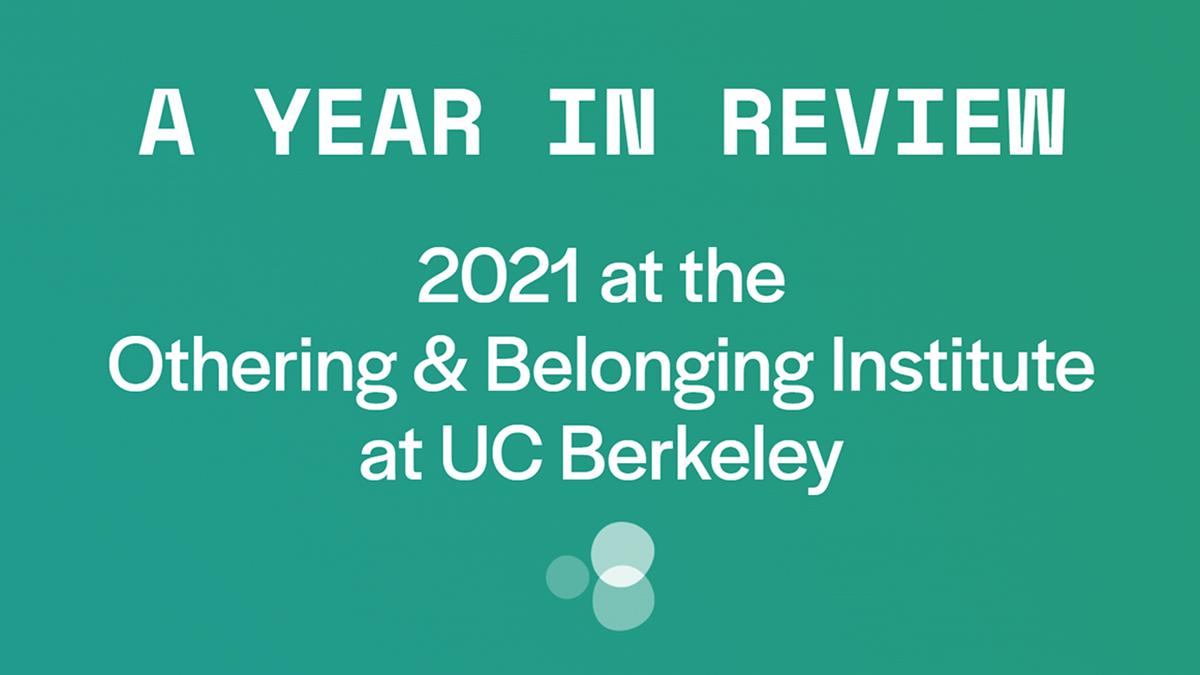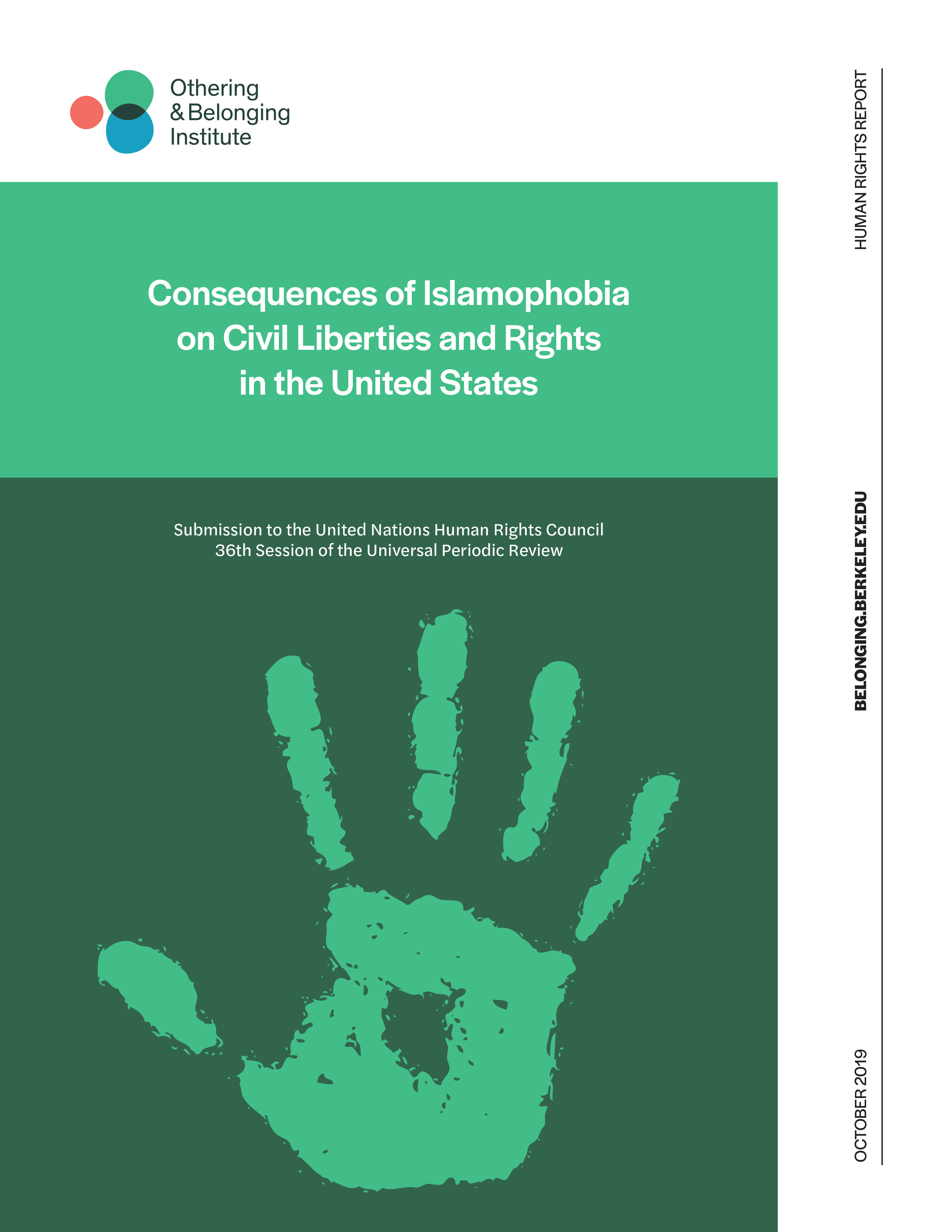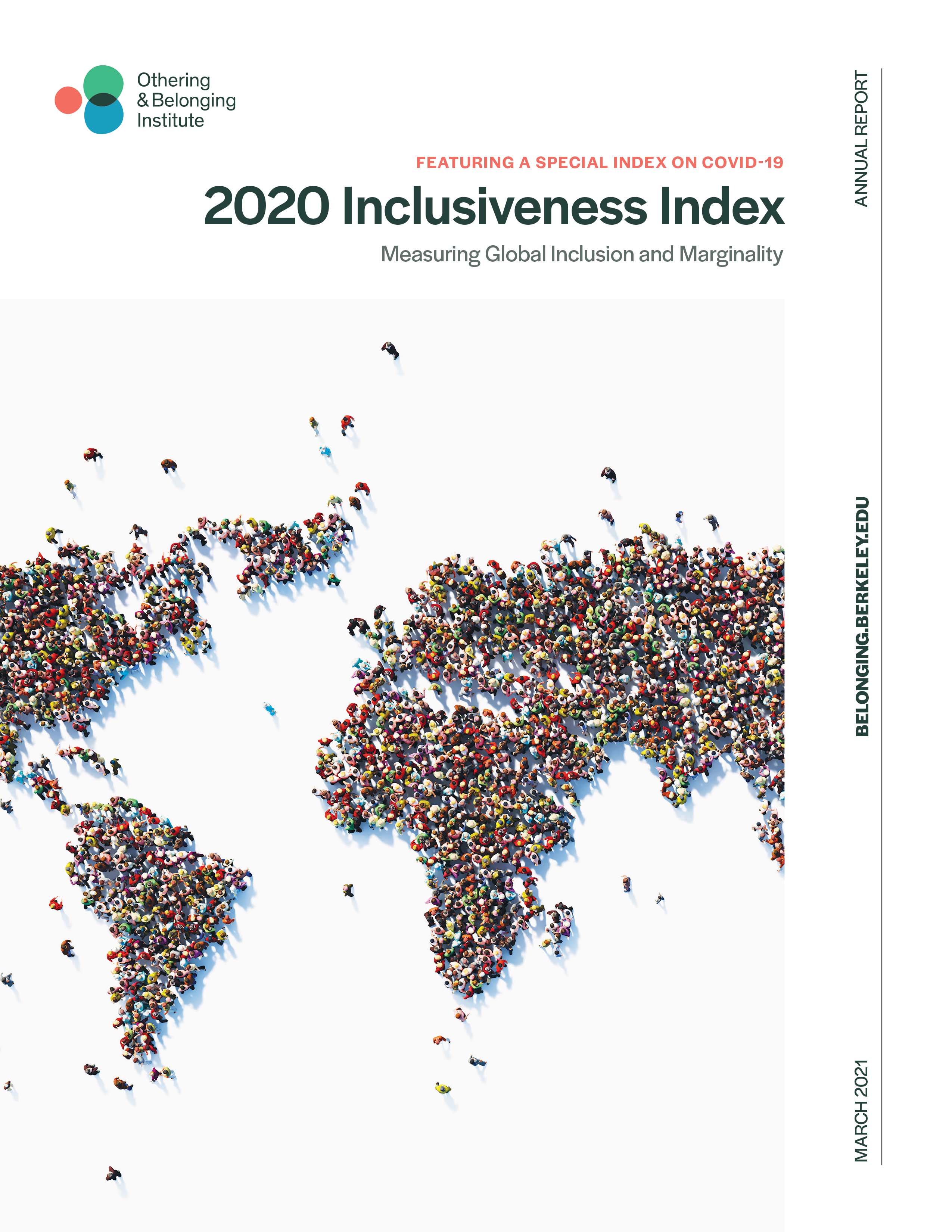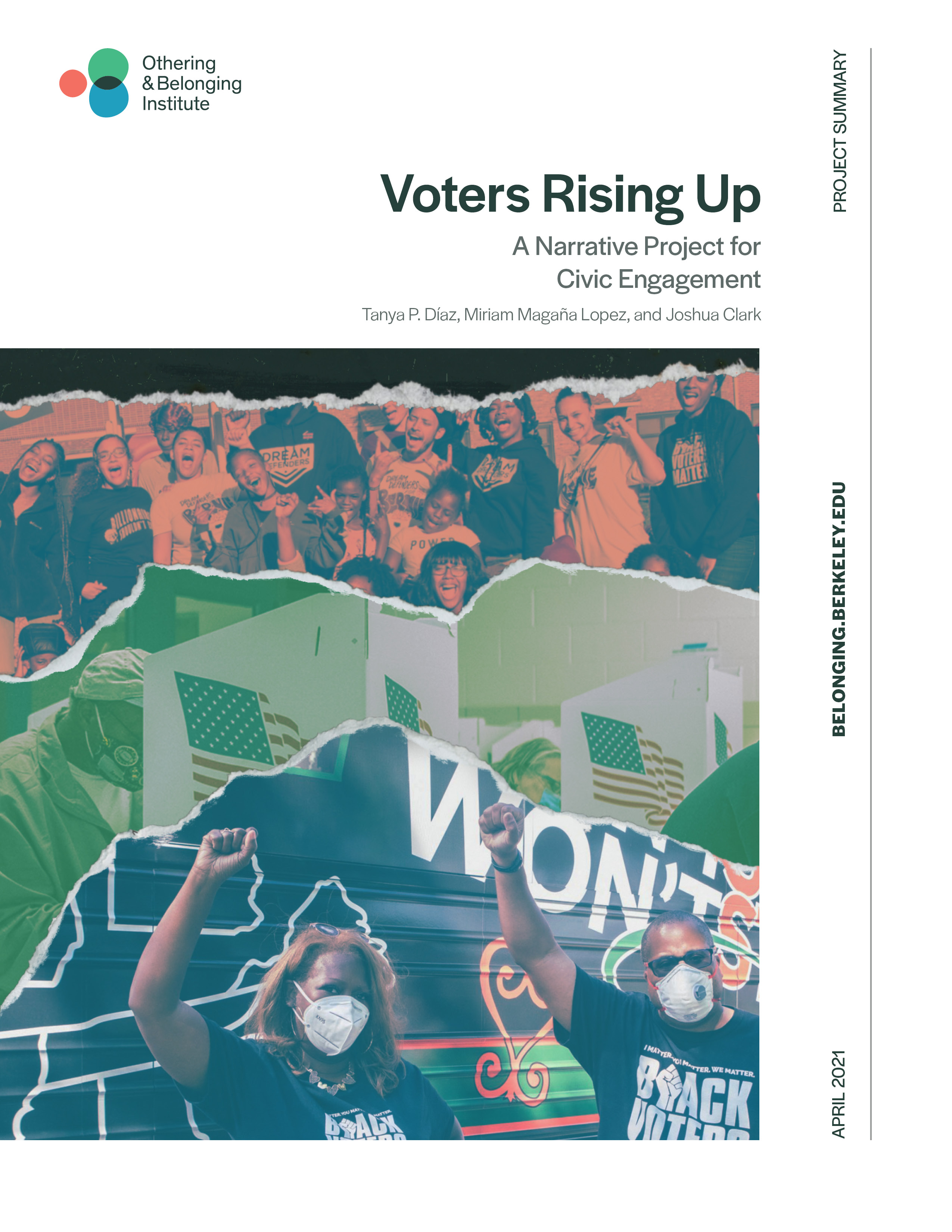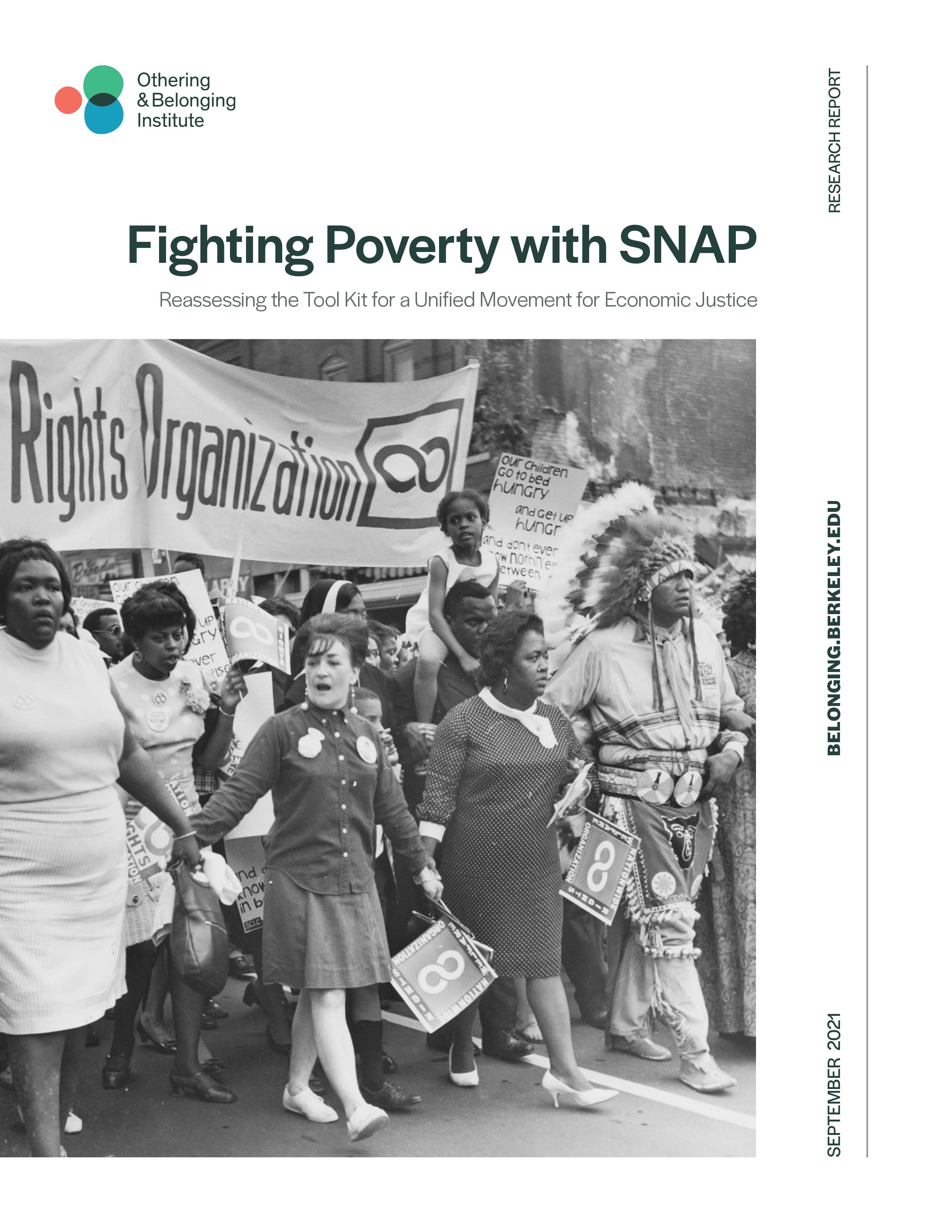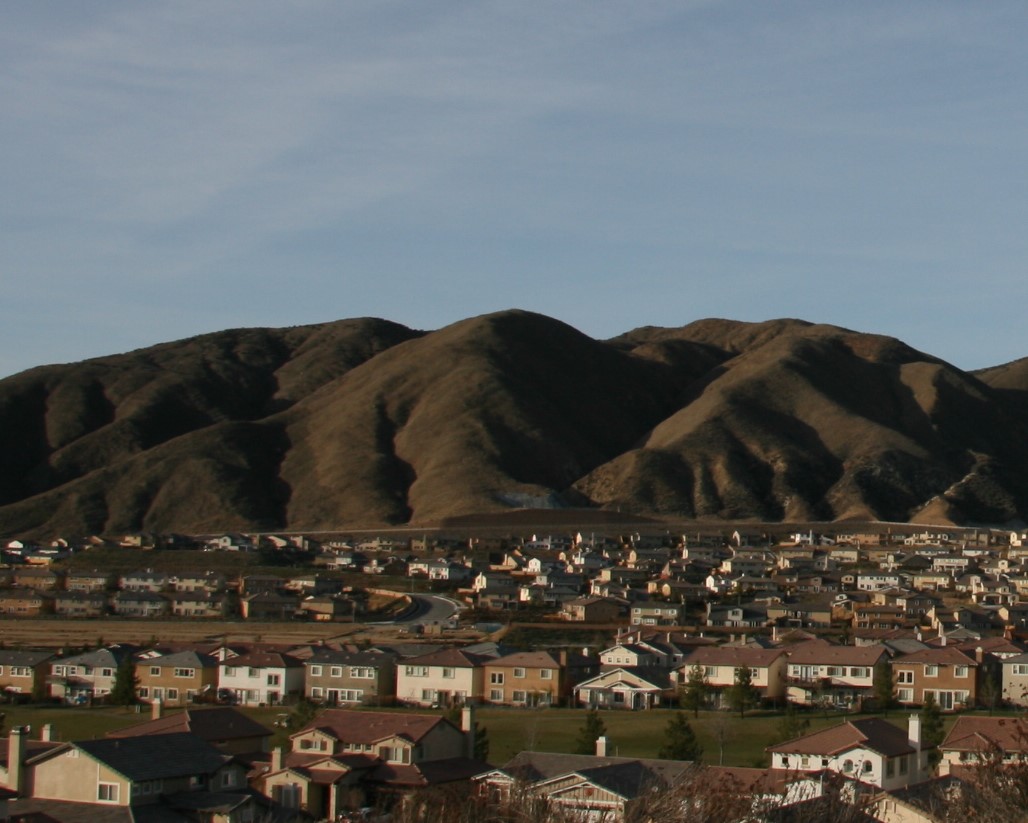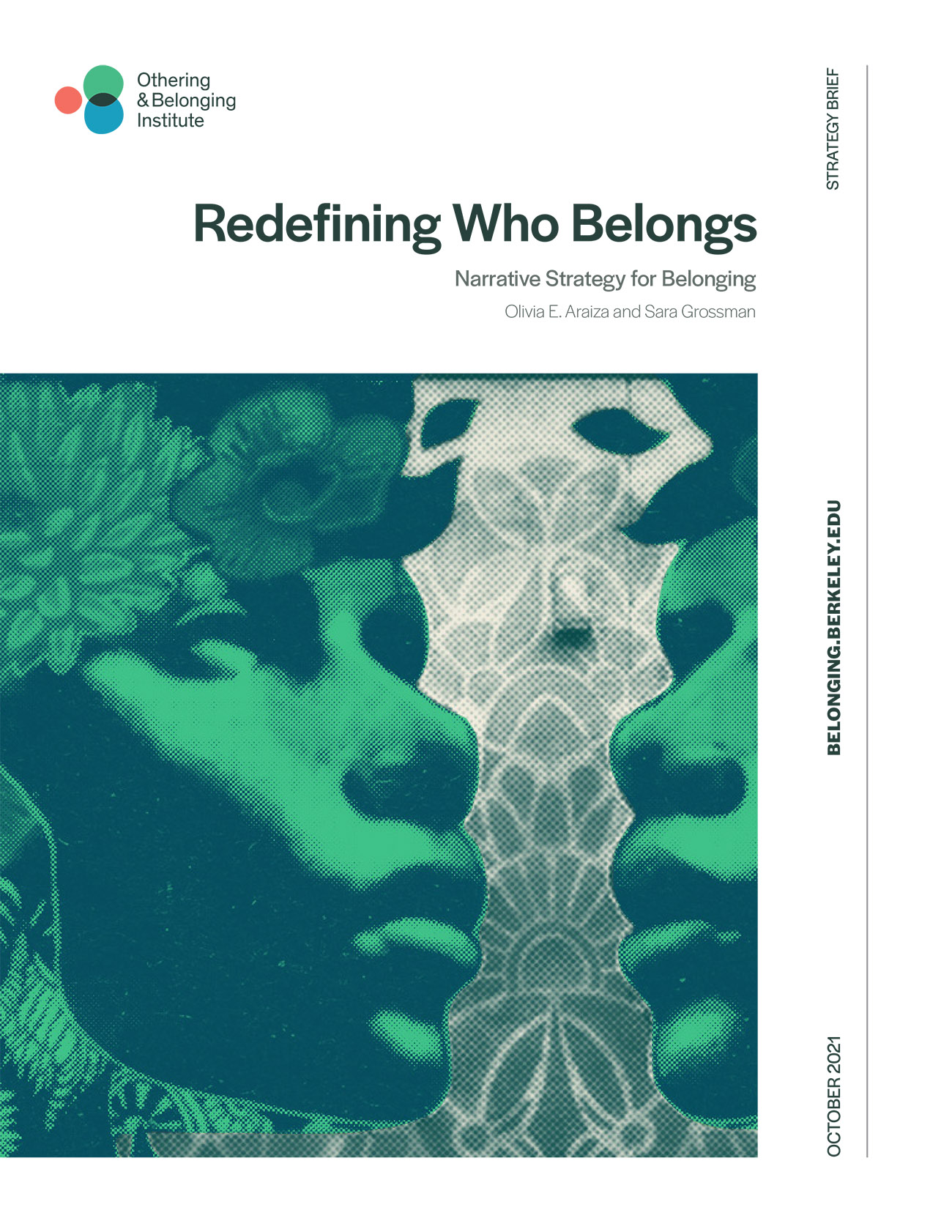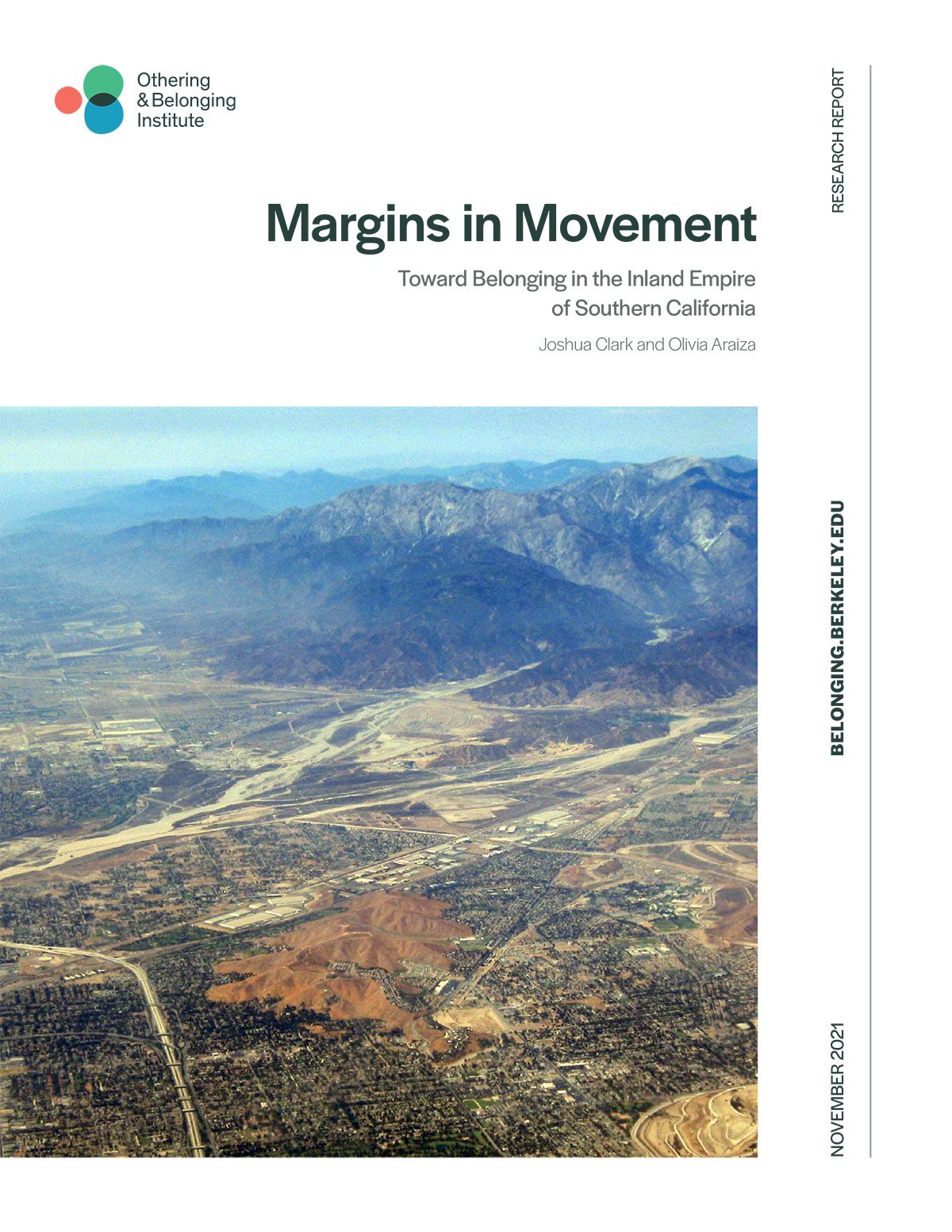Reports
In 2021, we published 13 major reports that cut across a number of issue areas including public health, education, housing, political economy, and racial segregation, as well as a handful that more generally sought to shed light on our larger foundational frameworks of bridging and belonging.
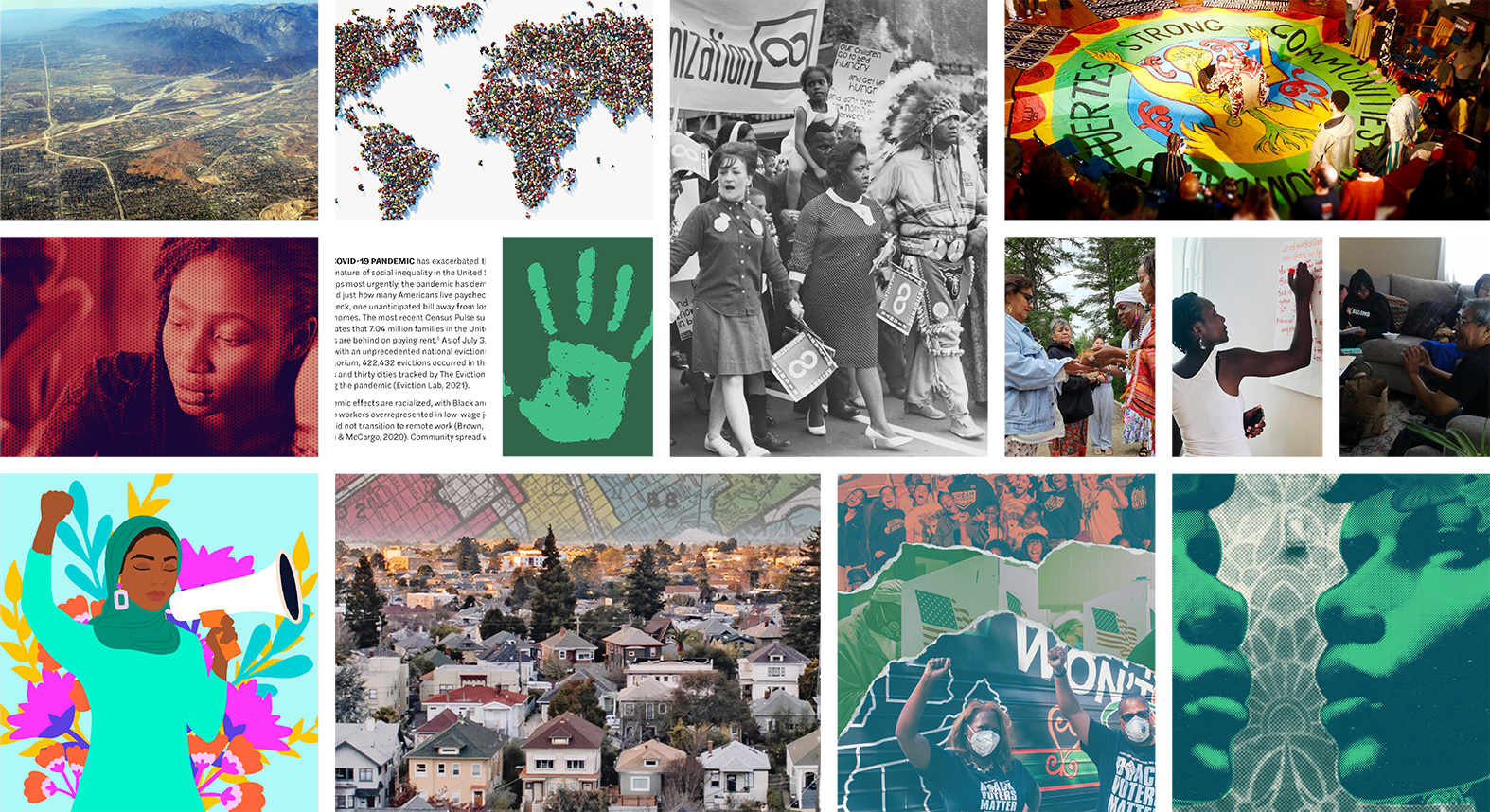
The Roots of Structural Racism:
Twenty-First Century Racial Residential Segregation in the United State
by Stephen Menendian, Samir Gambhir, and Arthur Gailes
The Roots of Structural Racism Project was unveiled in June 2021 after several years of investigating the persistence of racial residential segregation across the United States. Among the many components included in this project are the national segregation report (below) which contains startling findings about the intensification of racial residential segregation in recent decades; an interactive mapping tool that illustrates the level of segregation in every city, region and neighborhood in the country; a collection of tables which list cities and metropolitan regions by various measures of segregation and political polarization; nine city profiles noteworthy for their levels of segregation or integration; and a literature review featuring dozens of local city histories. All of these components can be accessed using the navigation menu on the right-hand side of the report page.
2020 update
Although this report was published in June of 2021, it did not include census data from the 2020 US Census, as that information was not available prior to publication. In October, we updated the study with the most recent census data, which was made available to the public in September 2021. Key findings in the update include:
- 23.6 percent of metropolitan areas were more segregated in 2020 than they were in 2010, and 54 percent of metropolitan areas were more segregated in 2020 than in 1990.
- The top 10 most segregated cities in the country, as of 2020, are Detroit, Newark, Hialeah, Chicago, Milwaukee, Cleveland, New York City, Irving, Miami, and St. Louis.
- The top 10 most segregated metropolitan regions of the country, as of 2020, are Chicago, New York City, Milwaukee, Detroit, Trenton, Miami, Los Angeles, Cleveland, Port Arthur, and Atlanta. Philadelphia holds the eleventh spot in both lists.
- The most segregated regions in the country remain the Midwest, Mid-Atlantic, and West Coast.
Read more about the update here.

The Most Segregated Cities and Neighborhoods in the San Francisco Bay Area
The 2020 Census Update
by Stephen Menendian, Samir Gambhir, and Chih-Wei Hsu
In addition to updating our “Roots of Structural Racism” project with new data from the 2020 Census, we also updated our prior research on “Racial Segregation in the San Francisco Bay Area” with this new census data as well. “Racial Segregation in the Bay Area” was a five part series exploring residential segregation in the region that was released between 2018 and 2020, and was based on data from earlier censuses. Key findings in this 2020 census update include:
- The most segregated (intra-municipal) city is Oakland, followed by San Rafael, San Jose, Menlo Park, Redwood City, San Francisco, Richmond, South San Francisco, Union City, and Dublin
- The most segregated (inter-municipal) city is East Palo Alto, followed by San Anselmo, Mill Valley, San Pablo, Tiburon, American Canyon, Los Gatos, Gilroy, Lafayette, and Orinda
- Three counties were more segregated in 2020 than they were in 2010: Marin, Napa, and Sonoma, with Marin being the most segregated county in the region by far.
- The most integrated (inter-municipal) cities are Rohnert Park, Windsor, Petaluma, Pinole, Suisun City, and Cloverdale
- Although 7 of the 9 Bay Area counties were more segregated in 2020 than they were in either 1980 or 1990, racial residential segregation in the region appears to have peaked around the year 2000 and has generally declined since.
Islamophobia Through the Eyes of Muslims
by Elsadig Elsheikh and Basima Sisemore
Between October 14 and November 2, 2020, OBI’s Global Justice Program developed and administered a national survey of the US Muslim population (citizens and noncitizen residents who live and/or work in the US) to understand the prevalence of Islamophobia in the US. In doing so, researchers intentionally set the survey to assess Islamophobia’s prevalence from the perspectives of those who bear the brunt of its effects on their daily lives, seeking to account for the diversity of US Muslims and sought to assess their societal engagement, worldviews, and belonging as they navigate their lives in the US.
Consequences of Islamophobia on Civil Liberties and Rights in the United States
by Elsadig Elsheikh and Basima Sisemore
This publication is part of the Global Justice Program’s Human Rights Agenda report series. In this series, we collaborate with other human rights, civil rights, and civil society organizations under the umbrella of the US Human Rights Network (USHRN) to advance the utility of the rights-based framework as a meaningful organizing tool for impacted communities and social movements to articulate claims of social, cultural, and political rights, and belonging. Our reports are reviewed by the United Nations Human Rights Commission, and the Human Rights Council, and inform the UN’s recommendations to hold the US Government and legislative bodies accountable to their obligations as related to the Universal Periodic Review (UPR), the International Convention on the Elimination of all forms of Racial Discrimination (ICERD), and the International Covenant on Civil and Political Rights (ICCPR).
2020 Inclusiveness Index
by Stephen Menendian, Samir Gambhir, and Elsadig Elsheikh
The Inclusiveness Index is an annual publication that identifies and captures the degree of group-based inclusion and marginality experienced across the world and within the United States. From year to year, the Inclusiveness Index is intended to help understand changes in how nations treat their marginalized groups, and how they respond to local and global phenomena, such as changing demographics as a result of increased global migration.
In addition to our typical ratings measuring levels of inclusiveness, the 2020 report included an index rating state and country policy responses to the COVID-19 pandemic. This index ranked country performance along three key factors, including 1) number of infections (effective policies and measures to control the spread of COVID-19 are reflected in the number of infections; A lower per capita number of infections reflects a better approach to mitigating the spread of this virus); 2) COVID-19 deaths (a robust health infrastructure and lower proportions of vulnerable populations in a nation-state are reflected in a lower number of deaths due to COVID-19; and 3) COVID-19 testing (a higher number of people tested is a measure of how robustly a country is trying to protect its people.)
Media Coverage: The 2020 Inclusiveness Index’ Covid Index in particular was covered widely by state and national news outlets, including Patch, Hawaii Public Radio, and Yahoo! News, among others.
Voters Rising Up
A Narrative Project for Civic Engagement
by Miriam Magaña Lopez, Joshua Clark, and Tanya P. Diaz
This report reviews the central work of the Rise Up for Justice Narrative Hub, which was active during the 2020 Presidential Election. The Hub brought together researchers, strategists, creatives, and digital communication specialists to support the civic participation of underrepresented groups and engage some of the leading Black- and Latinx-led power building organizations across the country. The authors detail the innovative model crafted by the Hub in get-out-the-vote campaigns leading up to the 2020 general election and 2021 Georgia Senate runoff elections.
Technology and the COVID-19 Era:
How Artificial Intelligence Shapes Futures of Othering & Belonging in an Era of Pandemic and Protest
by Nicole Montojo, Emnet Almedom, and Nicole-Marie Cotton
This report provides an overview of the current public conversation as it relates to the ongoing COVID-19 pandemic and algorithm-based artificial intelligence used in three interrelated domains that impact public health and social equity: the use of automated decision systems, surveillance, and social media.
Fighting Poverty with SNAP
Reassessing the Tool Kit for a Unified Movement for Economic Justice
by Hossein Ayazi and Elsadig Elsheikh
This report argues that Clinton-era work requirements and other “welfare reform” efforts have prevented the Supplemental Nutrition Assistance Program (SNAP) from realizing its full potential as an anti-poverty program. "The notion that work requirements prevent a dependency on government assistance programs hinges on anti-poor and racist stereotypes, and reinforces exposure to prison, poverty, and premature death for non-wealthy people who must work to live,” explained Hossein Ayazi, institute researcher and report co-author, in our press release. These issues are particularly pronounced in immigrant communities and communities of color that have faced decades of discriminatory policies in housing that created segregation and prevented wealth accumulation. As a result, these communities are more likely to live in poverty and endure disproportionate burdens during economic downturns than the general population.
Housing Affordability in the Wake of COVID-19
Regional Solutions for Southern California
by Sean Angst, Jovanna Rosen, Soledad De Gregorio & Gary Painter
This paper begins by describing current housing affordability dynamics across Los Angeles and the Inland Empire. Although rent burden metrics help identify households vulnerable to instability, it is the underlying housing and work conditions that shape residents’ lives and produce this indicator—particularly as people cope by working more and living in more crowded households. By comparing conditions driving the affordability crisis, we show that housing pressures found in the Inland Empire are a continuation or extension of Los Angeles dynamics. In response, we emphasize the need to simultaneously examine interrelated housing, labor, and social conditions and their underlying drivers across Southern California.
Redefining Who Belongs
Narrative Strategy for Belonging
by Olivia Araiza and Sara Grossman
Recent acute instances of failed political leadership—particularly around the pandemic and an ongoing lack of action to protect Black lives—have shone a bright light on questions essential to our future as a country: Who are we? Who are we becoming? The purpose of this brief is to understand how movement actors can create and put forth new salient strategic narratives that address underlying dominant beliefs while offering an alternative story line that fosters the political and economic victories we want to see. The report offers a short blueprint for developing a strategic narrative on belonging, relevant for a range of causes or issue areas, with examples from projects by Blueprint for Belonging and partners. A strategic narrative is not meant to be a story for a single campaign, but rather one that will underpin many different activities and tactics for attitude and behavior change in the long term.
Margins in Movement
Toward Belonging in the Inland Empire of Southern California
by Joshua Clark and Olivia Araiza
This report chronicles the most significant findings from more than two years of research with the people of the Inland Empire—the two-county region of Southern California consisting of San Bernardino and Riverside counties, often identified as a periphery “at the margins” in relation to Los Angeles. This research, carried out as part of OBI’s Blueprint for Belonging (B4B) project, seeks to understand prevailing beliefs, opinions, and narratives across different demographic subgroups in the region on topics including intergroup relations, the idea of community, economic opportunity and inequality, the role of government, and civic participation. Through collaborative work with on-the-ground organizations in the Inland Empire, the authors bring forward the most salient lessons relevant to contending with and transforming narratives and conventions in ways that foster inclusive, active civic identities and belonging..
Bridging to Belonging Case Series
by the Network for Transformative Change
The Bridging to Belonging Case Series seeks to capture real-world examples of bridging and belonging through writings and podcast interviews. In this series, OBI researchers analyze a range of breaking moments and bridging opportunities across different scales and contexts, such as schools, movements, governments and communities. They “show and hear” how these concepts play out on the ground. In the case series we hear from leaders implementing the work, and individuals who have experienced the transformation of bridging to create belonging. This series tells four powerful bridging stories that impact individuals, communities and structures. Each case identifies the breaking dynamic, the bridging action and how it fosters belonging.
View the project here and listen to the podcasts here.
